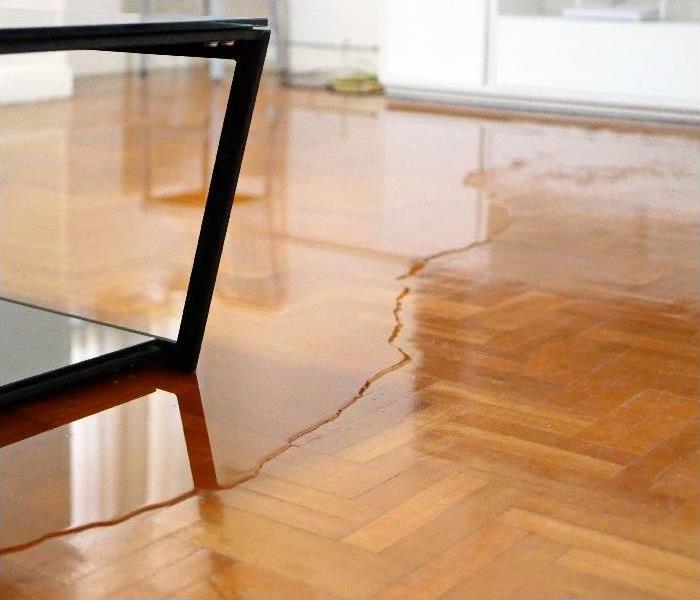How Long Should I Wait Before Calling in Professionals for a Water Issue in my Seminole Home?
5/24/2020 (Permalink)
 If your home has an unexpected water emergency, contact SERVPRO of Seminole & Central Gulf Beaches at (727) 391-6212.
If your home has an unexpected water emergency, contact SERVPRO of Seminole & Central Gulf Beaches at (727) 391-6212.
Water and Plumbing Issues Typically Degrade Over Time. By Calling a Professional Water Restorer to your Seminole Home, you can Help to Limit Further Losses.
Is it dangerous to continue living in a house with water issues?
While some water issues might seem benign, they can cause significant water damage to your Seminole home. Sewer backups can expose your home to various bacteria and viruses. Equally, a clean water leak can become a source of contamination over days as microbial organisms breed and reproduce in the presence of moisture. Leaving a known water issue over a more extended period can even result in structural damages that then require a lengthy and expensive restoration procedure. Most home insurance requires that the homeowner take necessary steps to mitigate and prevent property damages through maintenance. By enlisting the help of SERVPRO, you can ensure that your property gets back to a sanitary state quickly and efficiently.
What steps can I take to mitigate losses in my home after discovering a water issue?
• Isolating the source of water is essential to limiting losses. These may include removing appliance connections to the water supply or avoid using the plumbing system in your home.
• Limiting the spread of moisture from the source by shutting doors or placing fabric blockers in place to prevent water migration
• If water comes from a single source try to catch it using containers or by placing plastic tarpaulins on the floor
• Ventilating the affected area as much as possible to encourage airflow and evaporation as well as lowering the relative humidity
• If there is widespread water migration, for example, flooding, carefully remove any items out of the path of water- if you have doubts about doing this safely, wait for a restorer
• Avoid using the affected areas of your home as doing so can increase the spread of water and lead to cross-contamination
How can I prevent heavy furniture from exposure to water?
Larger furnishings like couches and armchairs can be tough to remove from a flooded area. However, it is vital to the longevity of the furniture that these are not consistently exposed or partially submerged in water. As part of our mitigation services, our technicians can help to limit exposure to moisture by blocking heavy items. Blocking furniture involves placing large flood blocks beneath the legs of the furniture and propping them up above the standing water level. These methods can be exceptionally effective at controlling the amount of water exposure in your Seminole property, as well as the resulting damages to your contents.
How should I keep my possessions out of harm's way in a water emergency?
Removing items from the vicinity of flooding waters or leaks can be a tricky task. There is the potential for slip and trip hazards in a property with a water emergency, especially when there are high standing water levels. There is also a risk of spreading water around when moving wet items to dry areas. If there is contamination in the water, taking wet items upstairs can drip grey or black water onto staircase carpets and across the upper levels of your home. SERVPRO technicians, us waterproof polyethylene sheets to protect dry areas of the home when moving items. During on-site storage, we can place wet items onto sheets where they can dry separately without causing further harm.
What kind of damages can to my possessions from exposure to moisture?
• A weakening of furnishing frames which can cup, warp or buckle with consistent water exposure
• Inner rotting of large furniture items or mold growth
• Degradation of wet fabrics if not allowed to air out properly
• Watermarking which creates inconsistent dye color in some areas of the fabric but not others.
• Dye bleeding which can reduce the color of the fabric as well as spreading to other areas like carpets
How long does the drying procedure typically take?
For minor to moderate water spills, the drying procedure can take between two and five days. However, water migration, as well as the architecture of your home, can influence the amount of time it takes to dry. Properties with larger rooms and higher ceilings can take longer. Dry outs involve placing water restoration equipment like air-movers, venting fans or dehumidifiers in the affected area, and exchanging humid indoor air with dry outdoor air. This process can seem slow, but controlling the relative humidity in your home is essential to drying while preventing microbial growth.
How can I dry out a large room more efficiently?
Drying depends on psychrometric factors. In a larger space, it can be challenging to control factors like humidity and temperature, which results in standard pieces of equipment taking longer to perform. To maintain drying efficiency, SERVPRO technicians can create smaller drying zones or tents to focus on equipment. Using a polyethylene sheet and weighing the perimeter down with sandbags can create a smaller drying zone. By attaching equipment hoses to air-movers, dehumidifiers, or fans, we can create a drying tent. Drying tents can be useful for efficiently drying floors or areas where the water damage is most prominent.
If your home has an unexpected water emergency, contact SERVPRO of Seminole & Central Gulf Beaches at (727) 391-6212.






 24/7 Emergency Service
24/7 Emergency Service